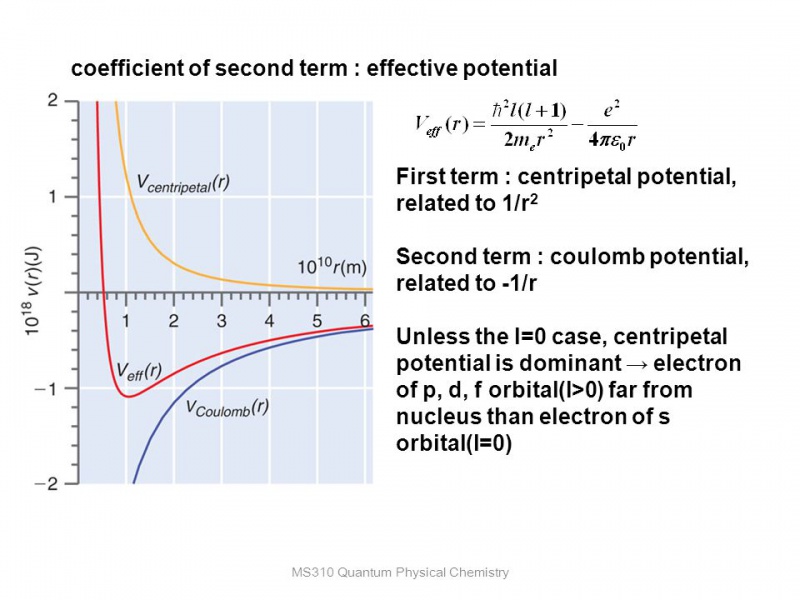PCh9 Lec 2
Jump to navigation
Jump to search
(4/8/20, bes)
Sorry...still working (or not working) on the exams.
Chapter 9: The Hydrogen Atom (cont...)
- ...focusing on Sec 9.1-9.3
As with most QM models the potential energy term makes the Hamiltonian more complex leading to a more complex solution/wavefunction. For the hydrogen atom, the potential energy term is the coulombic potential (Coulomb's law), an electrostatic attraction between the positive nucleus and the negative electron. Technically, Coulomb's law (classical mechanics) applies to stationary charges (+/-, +/+, -/-). Since the electron is moving around the nucleus (aka. the shell model), there is an additional force that is involved in this system. Figure 9.1 is one of the most important figures to understand in all of QM.
